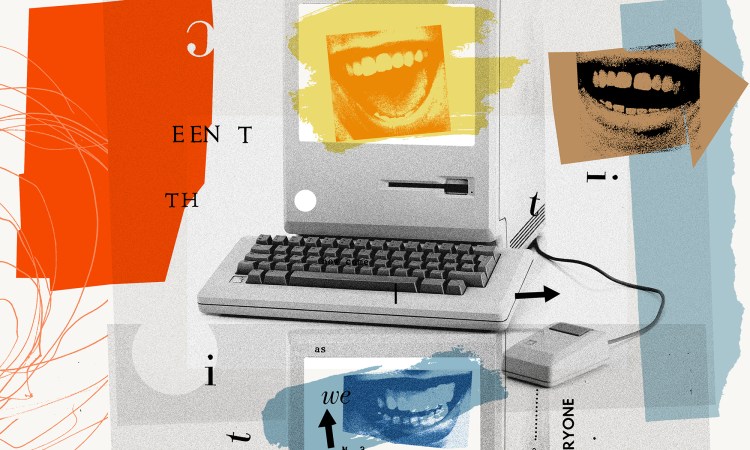
Jennifer Aaker and Naomi Bagdonas teach a course called “Humor: Serious Business” at Stanford University’s Graduate School of Business, and it’s helped hard-driving business minds there experience more joy.
Wish you could take it? Well, you can — sort of. Jennifer and Naomi wrote the book Humor, Seriously, where they share learnings from comedians, behavioral scientists and business leaders about how humor works and how it can improve your work and your life. Here, they suggest how you can put fun into your emails (yes, really).
We realize that the notion of using humor in your professional life might feel overwhelming or uncomfortable. If you’re having heart palpitations just thinking about the idea of trying to land a joke in front of your boss, your coworkers or that one guy in accounting who never smiles, we encourage you to lower the bar.
Remember, the goal is not necessarily to tell jokes or even be funny — it’s to make more human connections during everyday moments, and to be more productive and effective (not to mention less bored) in the process.
Today’s average employee spends close to 30 percent of their work hours on email, and receives 120 messages per day. A recent study conducted by Slack showed that 62 percent of their users spend over three hours of their work day in Slack, and another study found that 91 percent of businesses use two or more messaging apps simultaneously.
But digital correspondence doesn’t need to be soul-sucking. Instead, think of them as bite-sized opportunities to invite genuine connection with your coworkers and partners. Even a touch of levity can start a chain reaction that shifts the dynamic.
Below, we’ve outlined some easy and practical ways to incorporate levity into the emails you send.
#1: Use callbacks
A callback references a shared experience between you and the recipient, transforming a single moment into an inside joke. Callbacks are particularly powerful because they make it easy for the other person to reply in kind. Like instant yeast when you’re baking homemade bread, sprinkle some in and watch your dough rise.
One of our interviewees, Daria, shared an example from her own life. She was taking off from work early one day to get a haircut, and she and her boss, Saagar, had shared a laugh about the fact that the client deliverable she was working on might not be perfect, but at least her hair would be.
Calling back a moment when you and the recipient laughed together is particularly powerful.
Later that evening, Daria sent the completed deliverable to her boss, along with this callback:
Saagar,
Attached is the updated deck. Per our chat this morning, I think this will be a great tool to start the conversations we need with leadership. Let me know if the deck needs revising or if it now matches my hair: perfect.
Saagar promptly replied in kind:
Daria,
No revisions needed, matches your hair perfectly. Enjoy the holidays with your family.
With beautiful hair always,
Saagar
Just like that, Daria had reinforced the earlier moment of levity she and Saagar had shared, created a new moment, and made it easy for Saagar to reply in kind. Props to Saagar for not only acknowledging the levity but building on it with his sign-off.
Calling back a shared moment of any kind usually does the trick — but calling back a moment when you and the recipient laughed together, as Daria did, is particularly powerful.
One colleague of ours makes a deliberate practice of this any time she’s on a call with a new client. Inevitably, a few moments of laughter arise — whether from a dog barking, conference line malfunction, or someone joking around — and she jots them in her notebook with a *star. She doesn’t go out of her way to create these moments, but she says only a small handful of calls have gone starless in the years since she started noticing. Then, her favorite one or two make it into her follow-up email as callbacks.
The beauty of callbacks is that they slide effortlessly into just about any part of your email. But feel free to take a page out of Saagar’s book and look no farther than your trusty email sign-off.
A PS is an impactful way to slip a little levity into an otherwise serious email.
#2: PS: Add a PS
In a series of famous studies on direct mail response, professor and author Siegfried Vogele found that 90 percent of people read the postscript before the body of the letter. Meaning that your PS is likely to be your recipient’s first impression, not the last.
The same is true in email. It’s like finally living out the childhood dream of dessert before dinner. As such, a PS is an impactful way to slip a little levity into an otherwise serious email.
Here’s an example:
Hey Mark,
I am not sure if the hyperlink came through in yesterday’s email so wanted to follow up with a low-tech, never-fail PDF with some flowcharts. Attached for your viewing pleasure.
Cheers,
Sachi
PS. PDFs are the new black.
Hold up. Are PDFs a color? No. Does this line make sense? Barely. But somehow, it worked. What makes this technique so delightfully easy is that often a bit of randomness does the trick.
Simply naming something that’s true for you in the here and now, like “PS. it is HOT in Tucson” or “PS. it’s raining in San Francisco” or something else not about weather, makes it clear that you’re a person and not a robot (since everyone knows that robots can’t function in extreme heat or rain).
Whether it’s something random, a callback to the content of the email, or a reference to an inside joke you and the recipient share, a lighthearted PS is the email equivalent of a wink: It signals intimacy and invites a similar playfulness from the recipient.
How you say goodbye when you leave a job makes a lasting impression.
#3: Say goodbye with humanity
What is it about saying goodbye that makes us so uncomfortable? We make sneaky Irish exits from parties, we avoid talking about death (the Big Goodbye), and we’d often rather ghost someone than acknowledge the spark is going out.
The workplace is often no different.
But how you say goodbye when you leave a job makes a lasting impression. A psychological principle called the “peak-end rule” explains that the moments people remember most from an experience are the most emotionally heightened one and the final one. Which means that after you’re gone (from the job, that is) people are most likely to recall two key things: that one big exciting project you worked on, and how you said goodbye.
Most goodbye notes follow this same formula:
Today is my last day at _____. Over the last _____ years, I have had the pleasure and privilege of working with many of you. I have so enjoyed my time at _____ working alongside so many kind and talented people and am so grateful for all that I have learned. I hope our paths will cross again.
Yawn.
If you’ve been working with the same people for a while, we know you have something more personal to say to your co-workers than “I hope our paths will cross again.”
Between all the hours spent together on conference calls, brainstorming new ideas, and all the impromptu conversations you have while unjamming a project or a printer, you should have ample seed material to mine for a funny callback or a witty reference to some unique quirk of your specific company culture.
A goodbye note can be sincere and heartfelt while also making people smile, as in this lighthearted goodbye email from an intern who recently left her post at a large book publisher:
Hi all,
As everyone probably already knows from the donuts this morning, today is my last day. This summer has been a whirlwind for me — my previous job titles have included Ski Boat Driver and Cat Sitter, but this has been my most important undertaking. So from the bottom of my heart, thank you for taking me on, for involving me in your projects, and for answering all of my questions, no matter how annoying!
Thank you for lending me your odd passwords, for letting me sit in on your meetings, and for making me feel included here every day.(and thank you for the donuts). I appreciate every bit of it, and each one of you. In an hour, I’ll have to turn in my badge and head home to start packing, but I hope you’ll stop by my cubicle after I’m gone — I’ve left some stuff there for everyone. Some of it is edible.
Gratefully,
Kate
Excerpted from the book Humor, Seriously: Why Humor Is a Secret Weapon in Business and Life (And how anyone can harness it. Even you.) by Jennifer Aaker and Naomi Bagdonas. Copyright © 2021 by Jennifer Aaker and Naomi Bagdonas. Excerpted by permission of Currency, an imprint of Penguin Random House LLC. All rights reserved. No part of this excerpt may be reproduced or reprinted without permission in writing from the publisher.
Watch their TED Talk here:












